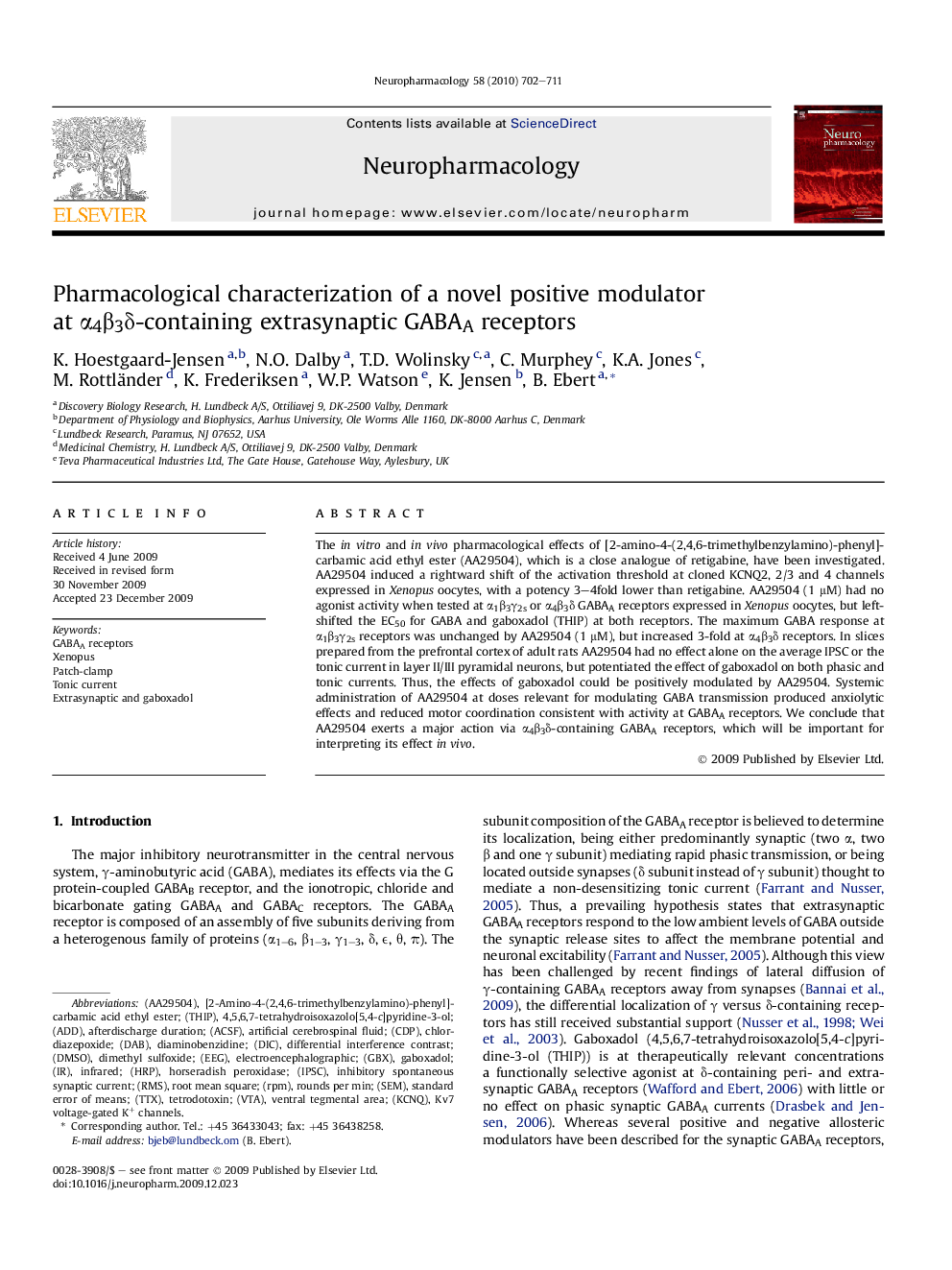| Article ID | Journal | Published Year | Pages | File Type |
|---|---|---|---|---|
| 2494084 | Neuropharmacology | 2010 | 10 Pages |
The in vitro and in vivo pharmacological effects of [2-amino-4-(2,4,6-trimethylbenzylamino)-phenyl]-carbamic acid ethyl ester (AA29504), which is a close analogue of retigabine, have been investigated. AA29504 induced a rightward shift of the activation threshold at cloned KCNQ2, 2/3 and 4 channels expressed in Xenopus oocytes, with a potency 3–4fold lower than retigabine. AA29504 (1 μM) had no agonist activity when tested at α1β3γ2s or α4β3δ GABAA receptors expressed in Xenopus oocytes, but left-shifted the EC50 for GABA and gaboxadol (THIP) at both receptors. The maximum GABA response at α1β3γ2s receptors was unchanged by AA29504 (1 μM), but increased 3-fold at α4β3δ receptors. In slices prepared from the prefrontal cortex of adult rats AA29504 had no effect alone on the average IPSC or the tonic current in layer II/III pyramidal neurons, but potentiated the effect of gaboxadol on both phasic and tonic currents. Thus, the effects of gaboxadol could be positively modulated by AA29504. Systemic administration of AA29504 at doses relevant for modulating GABA transmission produced anxiolytic effects and reduced motor coordination consistent with activity at GABAA receptors. We conclude that AA29504 exerts a major action via α4β3δ-containing GABAA receptors, which will be important for interpreting its effect in vivo.
